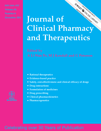Population pharmacokinetics of phenobarbital by mixed effect modelling using routine clinical pharmacokinetic data in Japanese neonates and infants: an update
Summary
What is known and objective: Optimal use of phenobarbital in the neonatal population requires information regarding the drug’s pharmacokinetics and the influence of various factors, such as different routes of administration, on the drug’s disposition. However, because of sampling restrictions, it is often difficult to perform traditional pharmacokinetic studies in neonates and infants. This study was conducted to establish the role of patient characteristics in estimating doses of phenobarbital for neonates and infants using routine therapeutic drug monitoring data.
Methods: The population pharmacokinetics of phenobarbital was evaluated using 109 serum concentration measurements obtained from routine phenobarbital monitoring of 70 neonates and infants. The data were analysed using the non-linear mixed effects model. A one-compartment pharmacokinetic model with first-order elimination was used. Covariates screened were current total bodyweight (TBW), gestational age, postnatal age (PNA), post-conceptional age, gender and neonates-infants clearance factor (serum concentration of phenobarbital; Conc).
Results and discussion: The final pharmacokinetic parameters were CL/F (mL/h) = (5·95·TBW (kg) +1·41·PNA (weeks)) Conc (serum phenobarbital concentration >50 μg/mL)−0·221,Vd/F (L) =1·01·TBW (kg), and F = 0·483 for oral administration and F = 1 was assumed for suppository. Conc−0·221 is 1 for phenobarbital concentration <50 μg/mL. The important variables for predicting phenobarbital clearance in this study were TBW, PNA and Conc. Phenobarbital clearance increases proportionately with increasing TBW, and an older newborn was expected to have a higher rate of clearance than a younger newborn of equal bodyweight. Moreover, the clearance of phenobarbital decreased nonlinearly with increasing serum concentration of phenobarbital >50 μg/mL (Conc−0·221).
What is new and conclusion: We developed a new model for neonate and infant dosing of phenobarbital with good predictive performance. Clinical application of our model should permit more accurate selection of initial and maintenance doses to achieve target phenobarbital concentrations in Japanese neonates and infants, thereby enabling the clinician to achieve the desired therapeutic effect. A similar approach can be used to validate our model for use in other neonate and infant populations.




